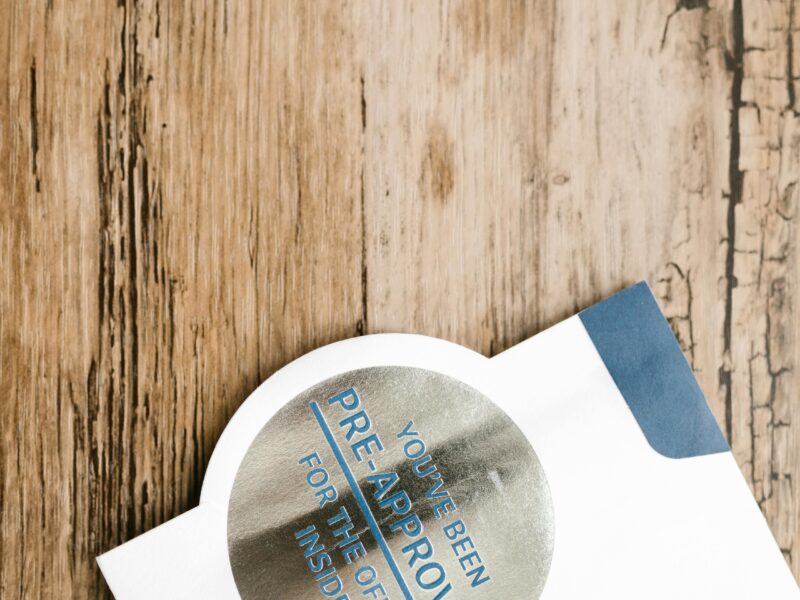Understanding Collateral: An Essential Part of Business Loan Applications:
Understanding Collateral: An Essential Part of Business Loan Applications: Understanding Collateral: An Essential Part of Business Loan Applications, Whether seeking funds to start a new venture or expand an existing company, obtaining a business loan requires demonstrating repayment ability to lenders. One key factor is providing collateral as security in case of default.
This comprehensive guide defines collateral and explores common types accepted. You’ll also learn valuation principles and strategies to strengthen your loan package with collateral.
Follow the advice provided to gain funding approval with a solid collateral backing plan in place.
What is Collateral for a Business Loan?
Collateral refers to assets pledged that the lender could seize and sell to recover losses if borrowing terms are broken. It serves as a form of insurance for the lender, mitigating risk exposure in the event repayment problems arise down the road.
Common collateral used includes business equipment, vehicles, real estate owned free and clear or with significant equity built up. Personal assets may also be accepted.
Types of Collateral Accepted
Leading collateral categories lenders consider:
– Equipment: machinery, tools, furniture, computers, etc.
– Inventory: raw materials, finished goods, supplies stocked for resale
– Accounts Receivable: invoices due from customers
– Real Estate: commercial property owned free and clear
– Securities/CDs: stocks, bonds, certificates held in brokerage account
– Life Insurance: must be term policy on owners/guarantors
Evaluate available assets and discuss options with the lender.
Collateral Requirements
To obtain sufficient collateral backing, understand the following criteria:
– Loan-to-Value Ratio: Amount borrowed vs collateral market value
– Uniform Commercial Code Filing: Protects lender’s collateral interest
– Title/Ownership Proof: Clear deed, registration showing no liens
– Condition/Depreciation: Age, wear and ongoing maintenance/repairs
– Appraisal: Professional valuation required for real estate especially
Proper asset documentation streamlines the review process.
Increase Your Chances of Approval
Taking the following steps boosts a loan package’s appeal:
– Provide collateral collateral exceeding the loan amount requested
– Offer additional business or personal guarantees if possible
– Consider adding a third party cosigner if personal credit weak
– Work with an SBA-approved lender utilizing their loan guarantee
– Stipulate a borrowing base limiting disbursement tied to collateral
Cushion provides safety nets reducing underwriting risks.
Strong Collateral Examples
Specific asset classes help illustrate commitment:
– Equipment: Modern machinery essential for daily production valued at $150,000.
– Real Estate: Owned commercial building housing the company worth $750,000 paid off.
– Inventory: $200,000 stock of commodities readily sold to repay debt.
– Accounts Receivable: $100,000 due invoices aged under 90 days presenting high liquidity.
Quantifying collateral goes far in winning loan approvals.
Maintaining Collateral Value
Responsible stewardship sustains credibility:
– Continuously insure collateral at replacement cost amounts
– Promptly pay property taxes, registration/license renewals
– Refrain from further encumbering collateral with other liens
– Care for collateral to preserve/increase resale market value
– Timely advise lender about any status or location changes
Ongoing collateral health maintains financing access long-term.
What is Collateral?
Collateral refers to an asset or group of assets that a borrower offers to a lender as security for a loan. If the borrower defaults on the loan, the lender has the legal right to seize and sell the collateral to recover the outstanding debt. Collateral serves as a form of risk mitigation for lenders, ensuring they have a means of recouping their losses if a borrower fails to meet repayment obligations.
Importance of Collateral in Business Loan Applications
Collateral plays a crucial role in business loan applications for several reasons:
1. Risk Reduction for Lenders
Lenders assess the risk associated with lending money to businesses. By securing a loan with collateral, the lender minimizes the risk of financial loss if the borrower defaults. This assurance encourages lenders to offer loans to businesses that might otherwise struggle to qualify for unsecured financing.
2. Improved Loan Approval Chances
Businesses that provide collateral often have a higher likelihood of loan approval. Lenders are more willing to approve loans for applicants who offer valuable assets as security, as it demonstrates a commitment to repaying the loan.
3. Access to Higher Loan Amounts
The amount a business can borrow often depends on the value of the collateral provided. Lenders may be willing to extend larger loan amounts to businesses that offer substantial or highly liquid collateral, as it increases the likelihood of loan recovery in the event of default.
4. Lower Interest Rates
Secured loans typically come with lower interest rates compared to unsecured loans. Since the lender assumes less risk with a secured loan, they can afford to offer more favorable interest rates, making financing more affordable for businesses.
5. Longer Repayment Terms
Business loans backed by collateral often come with longer repayment periods. Lenders are more comfortable offering extended terms when they have collateral as a safety net, making repayment more manageable for businesses.
Types of Collateral Used in Business Loans
There are several types of collateral that businesses can use to secure a loan. The most common include:
1. Real Estate
Commercial properties, land, and personal real estate can be used as collateral for business loans. Since real estate generally holds high value, it is often favored by lenders. However, the appraisal and legal process can be time-consuming.
2. Inventory
Businesses that sell physical products can use their inventory as collateral. This type of collateral is more common for retail and wholesale businesses. However, lenders may discount the value of inventory due to the risk of obsolescence or depreciation.
3. Equipment and Machinery
Businesses in industries such as manufacturing, construction, and logistics often use equipment or machinery as collateral. Lenders assess the resale value of these assets to determine their worth as collateral.
4. Accounts Receivable
Businesses that have outstanding invoices from customers can use accounts receivable as collateral. This type of collateral is common in invoice financing or factoring arrangements, where businesses borrow against their pending payments.
5. Vehicles
Commercial vehicles such as trucks, vans, or company cars can be pledged as collateral for a business loan. Lenders evaluate the condition, market value, and depreciation rate before accepting vehicles as collateral.
6. Cash Savings and Investments
Cash deposits, certificates of deposit (CDs), stocks, and bonds can be used as collateral. These are highly liquid assets, making them attractive to lenders as they can be quickly converted into cash if needed.
7. Personal Assets
In some cases, business owners use personal assets such as homes, cars, or valuable possessions to secure a business loan. This option is common for small business owners or startups that lack sufficient business assets.
Factors Lenders Consider When Evaluating Collateral
Lenders evaluate collateral based on several factors to determine its acceptability:
1. Market Value
The appraised value of the collateral is a critical factor. Lenders prefer assets with stable or appreciating value.
2. Liquidity
Assets that can be quickly sold with minimal loss of value are more favorable as collateral.
3. Depreciation Rate
Assets that depreciate quickly, such as vehicles or specialized machinery, may be less attractive to lenders.
4. Ownership and Liens
Lenders verify that the borrower owns the asset outright and that there are no existing liens or claims against it.
5. Loan-to-Value (LTV) Ratio
Lenders determine how much they are willing to lend based on the collateral’s value. A common LTV ratio for secured business loans is 70-80% of the asset’s value.
The Role of Personal Guarantees
In addition to collateral, lenders may require a personal guarantee from the business owner. A personal guarantee means the business owner is personally responsible for repaying the loan if the business defaults. This adds another layer of security for lenders and ensures the borrower has a vested interest in repaying the loan.
Challenges and Risks Associated with Collateral
While collateral provides many benefits in securing business loans, it also comes with risks and challenges:
1. Asset Seizure in Case of Default
If the business fails to meet repayment obligations, the lender has the right to seize the pledged collateral. This can lead to financial distress and operational disruptions.
2. Undervaluation of Assets
Lenders may appraise assets at a lower value than the business expects, reducing the loan amount available.
3. Restrictions on Asset Use
Some lenders impose restrictions on the use of collateral, limiting business flexibility.
4. Personal Financial Risk
If a business owner uses personal assets as collateral and the business fails, they risk losing personal wealth and property.
How to Choose the Right Collateral for a Business Loan
When selecting collateral, businesses should consider the following:
- Choose assets with strong market value to maximize borrowing potential.
- Ensure ownership clarity and resolve any existing liens or encumbrances.
- Consider the impact on operations if the collateral is seized.
- Assess depreciation and liquidity to determine suitability.
- Understand lender requirements and negotiate terms where possible.
Conclusion
Understanding Collateral: An Essential Part of Business Loan Applications, Collateral is a fundamental aspect of securing business loans, providing security to lenders and access to funding for businesses. By understanding the types of collateral available, the evaluation criteria used by lenders, and the associated risks, business owners can make informed decisions when applying for loans. Selecting the right collateral and structuring loan agreements wisely can improve financing opportunities while minimizing financial risks.



